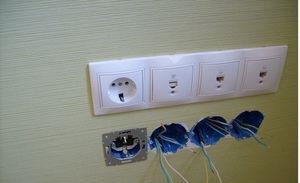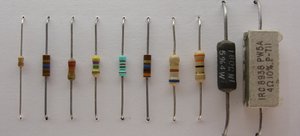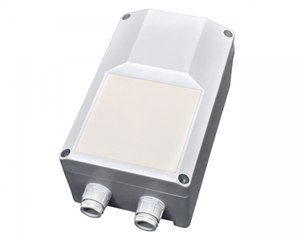Tables of power and electricity consumption by energy-saving LED lamps
Energy-saving include fluorescent compact and LED. Currently, there is an active process of replacing traditional incandescent lamps with energy-saving counterparts.
For equivalent incandescent lamp replacement, which provides some light, it is necessary to choose an energy-saving one with equal or close in value luminous flux, measured in lumens (lm). The value of the luminous flux of a particular energy-saving is given on its packaging.
Lamp power table
The table compares the compliance of the electric power of incandescent lamps with fluorescent compact and LED, providing different light fluxes. The last row of the table is presented ??light efficiency, which characterizes energy consumption.
| Luminous flux, lm | Electric power of the lamp, W | ||
| incandescence | luminescent compact | LED | |
| 250 | 20 | 5 | 3 |
| 400 | 40 | 8 | 4 |
| 700 | 60 | 15 | 8 |
| 950 | 75 | 19 | 11 |
| 1300 | 100 | 26 | 14 |
| 1800 | 150 | 36 | 20 |
| 2500 | 200 | 50 | 28 |
| Light efficiency, lm / W | ? 12 | ? 50 | ? 90 |
The table brings the power of incandescent lamps in line with those of compact fluorescent lamps., and LED, sets the power ratio.
It follows from the table, that efficiency (economy) compact fluorescent over incandescent lamp above 4,2 times, and LED, respectively - in 7,5 times. It should be noted, that led in 1,8 times more economical than compact fluorescent.
Example of calculating lighting efficiency
We will estimate economic efficiency on an example of annual expenses for lighting of the apartment. Let's say, necessary daily for 3 hours for one year (365 days x 3 h = 1050 year) use for lighting 3 incandescent lamps, power 100 watts each. Total power consumption is 300 watts or 0,3 kw. Smooth light flux can be created 3 luminescent compact total power 78 watts (3 PC. X 26 W) or 0,078 kW or, 3 LED with power 14 watts each, that corresponds 42 W of their total power (3 PC. X 14 W). The calculation of lighting costs for each of the options is presented in the table.
| indicator | Lighting option with lamps | ||
| incandescence | luminescent compact | LED | |
| Total power consumption, kw | 0,3 | 0,078 | 0,042 |
| Annual electricity consumption, kW year | 328,5 | 85,4 | 46,0 |
| Annual electricity costs (at cost 4,68 p. For 1 kW year), p. | +1537 | 400 | 215 |
| Cost 3 lamps, p. | 150 | 450 | 990 |
| Total costs in the 1st year, p. | 1687 | 850 | 1205 |
| Expenses in the 2nd year, p. | 1687 | 400 | 215 |
| Total costs for 2 years, p. | 3374 | 1250 | 1420 |
| Expenses in the 3rd year, p. | 1687 | 400 | 215 |
| Total costs for 3 years, p. | 5061 | 1650 | 1635 |
It should be borne in mind: the service life of incandescent lamps is 1000 hours (this will require an annual acquisition 3 things), luminescent compact 8000 hours, and LED 25000, which is also taken into account in the calculations in the efficiency options.
As can be seen from the table, lighting option with incandescent lamps, turned out to be more expensive, a, so, ineffective in the first year. In the first year, the costs of this option in 2 times higher than the cost of lighting with compact fluorescent and c 1,4 times with LED option.
The second year of lighting confirms the effectiveness of the option with luminescent compact over the option with LED (at the end of the second year loses 170 p.).
Following the results of the third year the variant with LED becomes more effective than the variant with luminescent compact.
It should be noted, that the comparison options are given as of September 2015 for the central regions of Russia at a constant cost of electricity and lamp prices.
The following circumstances must be taken into account when choosing a lighting option:
- in addition to the inefficiency of using incandescent lamps as a light source compared to energy-saving, their fire hazard should be borne in mind (the bulb temperature of the switched on lamp exceeds 100 degrees Celsius);
- in luminescent compact in a glass flask there are mercury vapors, which makes it dangerous to operate;
- luminescent compact have a time delay when turned on, so they need at least 3 minutes for maximum brightness (during this time the inert gas in the flask is heated);
-
luminescent compact characteristic flicker effect, which prohibits their use in rooms with moving parts of mechanisms, because, perhaps, occurrence of stroboscopic effect (at stroboscopic effect driving parts can seem motionless).
These shortcomings are absent in LEDs, which allows you to make a choice in their favor.
Trends in technology, LED manufacturing technologies have reduced their cost 3,5 times last 5 years. At the same time, the cost of electricity has increased 2,2 times (with 2,15 to 4,68 p. For 1 kW year).
conclusions
- So, while maintaining these trends, LEDs will displace compact fluorescents throughout 2016 — 2018 рр. and drive them out (on 85%) to 2019 year.
- It should be mentioned about the versatility of LEDs, which can be used as a flashlight, and for home and street lighting.



